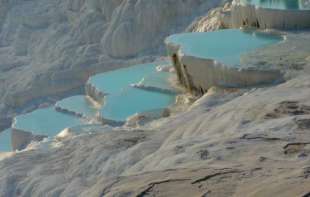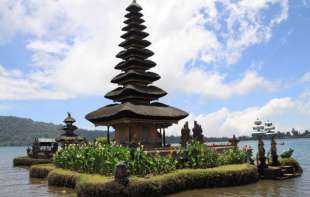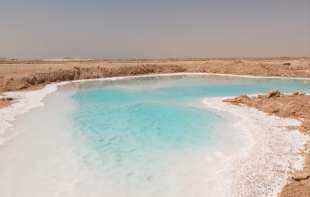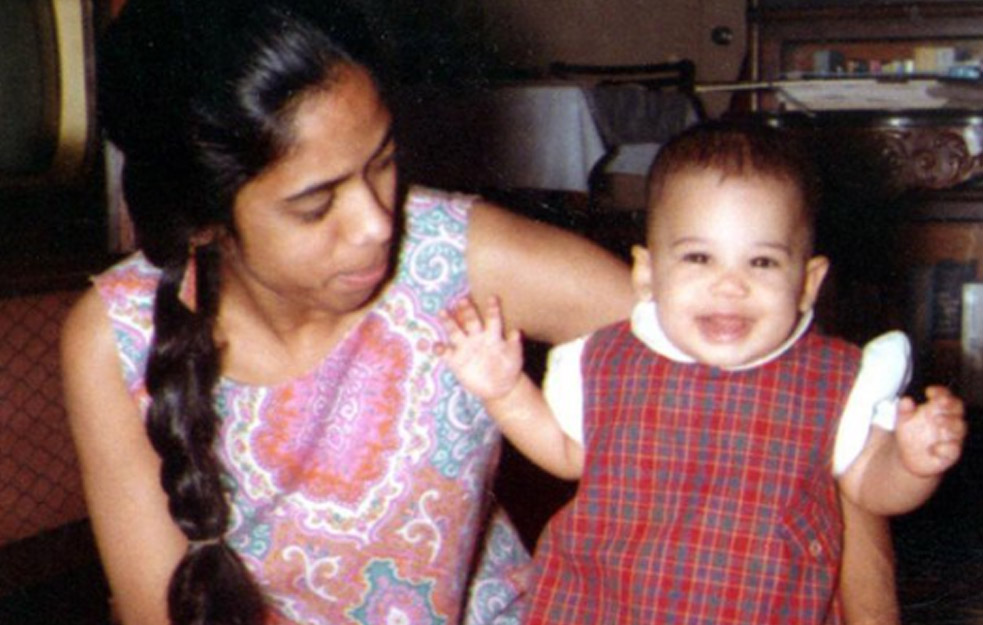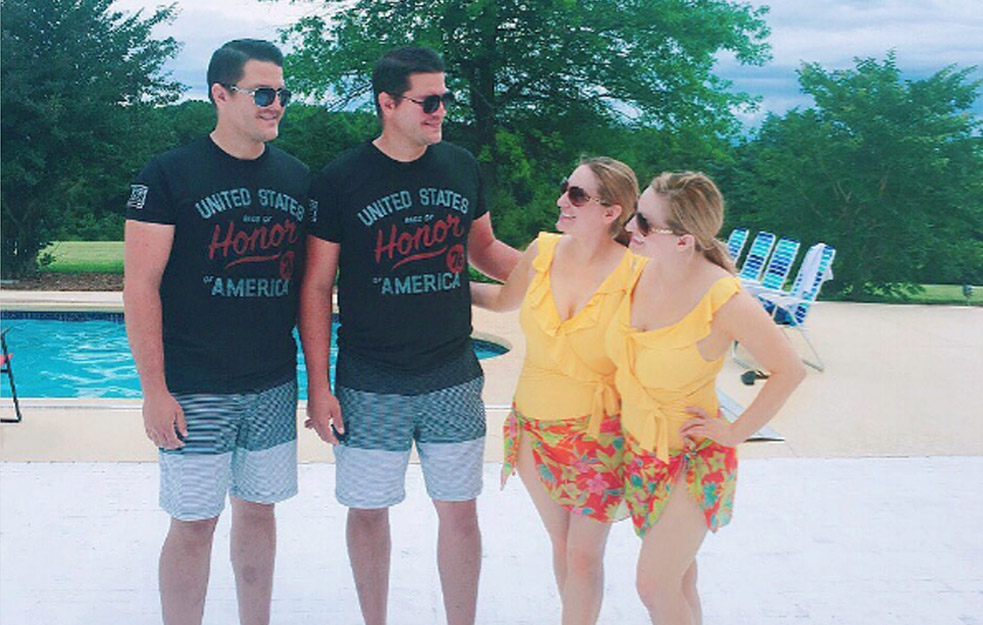Amazing diving in the Maldives and beautiful marine life
Swimming and diving can always be a beautiful experience that we will remember for a lifetime.
The underwater world in the Maldives is one of the richest and most colorful in the world. You can snorkel or opt for deep diving. Most resorts have their own diving schools so you can prepare for your first dive. This magical world is definitely a new experience that you should experience.
What should not be missed and what is special is night diving with manta rays in the Maldives. The most famous location is Hanifaru bay in Baa Atoll. During the day and in the season, manta rays are more difficult to find. Encounters occur more often during the rains in Ari Atoll. The wingspan of these beautiful creatures is 2m and divers are not afraid of them, all you have to do is jump into the water and enjoy the incredible experience.
roamtobewild Bianca | Travel • Underwater • Vanlife
Would you ever swim with sharks? These are nurse sharks and are relatively harmless to humans although they do have sharp teeth and can use them if need be. I never imagined the feeling i had this day, literally so blissed out to be in a swarm of marine life. Probably one of the coolest things i have seen so far in the Maldives 🇲🇻 There are a few points in the Maldives that they can take you to swim with these sharks and i definitely recommend trying it out! So exhilarating ❤️ Save this post to remember to visit Maldives! #maldives #maldivas #sharks #nurseshark #uwphotography #uwphotographer #maafushi #thulusdhoo #freediving #freediver #snorkeling #snorkel #stingray #stingrays #visitmaldives #travel #adventuretravel #travelreels
View this post on Instagram
Amazing diving in the Maldives and beautiful marine life
The Maldives is a beautiful country located in the Indian Ocean. It is well-known for its stunning beaches and clear blue waters. The Maldives is also a great place to go diving, as there are many amazing spots to explore underwater. In this article, we will take a look at the best diving spots in the Maldives, what kind of marine life you can expect to see, and what to pack for your diving trip.
The best diving spots in the Maldives
The Maldives is an archipelago of 26 atolls located in the Indian Ocean, southwest of India and Sri Lanka. It is the lowest country in the world, with an average ground level of only 1.5 meters (4 feet 11 inches) above sea level. The Maldives is vulnerable to rising sea levels as a result of climate change. There are many beautiful diving spots in the Maldives, with a variety of marine life to see.
Some of the best diving spots in the Maldives include:
1. The Atoll Pass: Located between two atolls, this pass is known for its strong currents and abundance of fish. You can expect to see sharks, turtles, and rays here.
2. Banana Reef: As its name suggests, this reef is shaped like a banana. It is one of the most popular diving spots in the Maldives due to its beautiful corals and rich marine life. You can expect to see a variety of fish, turtles, and even dolphins here.
3. Manta Point: This is one of the best places in the world to see manta rays up close. These gentle giants are often seen swimming near the surface, making them easy to spot for divers of all levels.
4. Thila Falhu: This reef is known for its dramatic overhangs and caves which provide shelter for a variety of fish and other marine creatures. Keep your eyes peeled for nurse sharks, barracudas, and tuna here.
5. Kuredu Express: This fast-moving channel is perfect for experienced divers who are looking for an adrenaline rush. You can expect to see plenty of fish as well as turtles and sharks here.
What kind of marine life you can expect to see
The Maldives is home to a great variety of fish, including many endangered species. You can also expect to see turtles, rays, and sharks while diving in the Maldives. The corals in the Maldives are some of the most beautiful in the world.
The reefs around the Maldives are teeming with life, making them a veritable paradise for divers of all levels. Beginner divers can expect to see plenty of fish, while more experienced divers may be lucky enough to spot turtles, rays, and even sharks.
The corals in the Maldives are some of the most beautiful in the world. They come in a wide range of colors and shapes, and provide a home for many different types of fish. Divers can expect to see a wide variety of coral while diving in the Maldives.
While diving in the Maldives, keep your eyes peeled for some of the following marine life:
Fish: The Maldives is home to a wide variety of fish, including many endangered species. Some of the fish you might see while diving include barracuda, tuna, snapper, and grouper.
Turtles: The Maldives is one of the best places in the world to see turtles up close. These gentle creatures often swim near the surface, making them easy to spot for divers of all levels. Keep your eyes peeled for green turtles, hawksbill turtles, and loggerhead turtles while diving in the Maldives.
Rays: Rays are often seen swimming near the surface in the Maldives. These graceful creatures come in a variety of colors and patterns, making them a delight to spot while diving. Keep your eyes peeled for manta rays, stingrays, and eagle rays while diving in the Maldives.
Sharks: While diving in the Maldives, you may be lucky enough to spot a shark or two. These predators often stick to deeper waters, so they may be more difficult to spot than other marine life. However, if you keep your eyes peeled you may be lucky enough to see nurse sharks
What to pack for your diving trip
When packing for your diving trip to the Maldives, there are a few essential items you will need to bring with you. These include a bathing suit or swim shorts, sunscreen, sunglasses, a hat or visor, a beach towel, flip flops or sandals, water shoes, and a mask, fins, and snorkel.
The Maldives is an archipelago of 26 atolls located in the Indian Ocean. It is the lowest country in the world, with an average ground level of only 1.5 meters (4 feet 11 inches) above sea level. The Maldives is vulnerable to rising sea levels as a result of climate change. There are many beautiful diving spots in the Maldives, with a variety of marine life to see. The water temperature in the Maldives ranges from 25-30 degrees Celsius (77-86 degrees Fahrenheit), so a bathing suit or swim shorts should be sufficient to wear while diving.
Sunscreen is essential to protect your skin from the harmful UV rays of the sun. The sun is very strong in the Maldives and can cause sunburn quickly. A sunscreen with at least SPF 30 is recommended. Sunglasses are also important to protect your eyes from the sun and to help you see underwater more clearly. A hat or visor can help keep the sun off your face and out of your eyes while you are diving.
A beach towel can be used to dry off after a dive or after swimming in the ocean. Flip flops or sandals are essential for walking on the hot sand and for protecting your feet from sharp objects on the reef. Water shoes can also be worn while diving to protect your feet from coral cuts and stings from marine creatures.
A mask, fins, and snorkel are necessary for diving and snorkeling. There are many different types and brands of masks, fins, and snorkels available on the market. It is important to choose a mask that fits well so that it does not leak when you dive down underwater. Fins help you move through the water more easily and efficiently. Snorkels allow you to breathe while swimming on the surface of the water without having to come up for air every few minutes
Tips for beginner divers
Diving can be a daunting prospect for beginners, but with the right preparation and guidance, it can be an incredibly rewarding and enjoyable experience. Here are a few tips for beginner divers who want to dive in the Maldives:
1. Find a qualified instructor: The first step to taking up diving is finding a qualified instructor who can help you learn the basics and feel comfortable in the water. There are many diving schools in the Maldives that offer courses for beginners. Do some research to find an reputable school with qualified instructors.
2. Choose a dive location: Once you have found an instructor, the next step is to choose a dive location. The Maldives has many beautiful dive spots, but some are more suitable for beginners than others. Talk to your instructor about where they think would be best for you to start diving.
3. Prepare for your dive: Once you have chosen a dive spot, it is important to prepare for your dive. This means making sure you have all the necessary equipment and that you understand the safety procedures involved in diving. Your instructor will be able to help you with this.
4. Start slow: When you first start diving, it is important to take things slowly and not try to do too much too soon. Listen to your instructor and follow their advice. Dont try to push yourself beyond your comfort level.
5. Enjoy yourself: Finally, remember to relax and enjoy yourself! Diving can be a great way to explore the underwater world and see things that you would never get to see otherwise. Take your time and savor the experience
Where to stay in the Maldives for the best diving experience
The Maldives is a beautiful country with many different diving spots to choose from. The water temperature is comfortable for diving all year round, and the marine life is plentiful. The best time to go diving in the Maldives is from November to April.
There are many resorts in the Maldives that cater to divers of all levels. Some of the best resorts for diving in the Maldives include:
1. Shangri-La Villingili Resort and Spa: This resort offers world-class diving facilities, as well as a spa and a variety of restaurants. The resort is located on its own private island, and guests can enjoy stunning views of the Indian Ocean.
2. Dhigali Maldives Resort: This resort offers an overwater bungalow experience, as well as a variety of dining options and a spa. The Dhigali Maldives Resort is located on its own private island, and guests can enjoy stunning views of the Indian Ocean.
3. Soneva Fushi Resort: This resort offers villas with private pools, as well as a variety of dining options and a spa. The Soneva Fushi Resort is located on its own private island, and guests can enjoy stunning views of the Indian Ocean.




